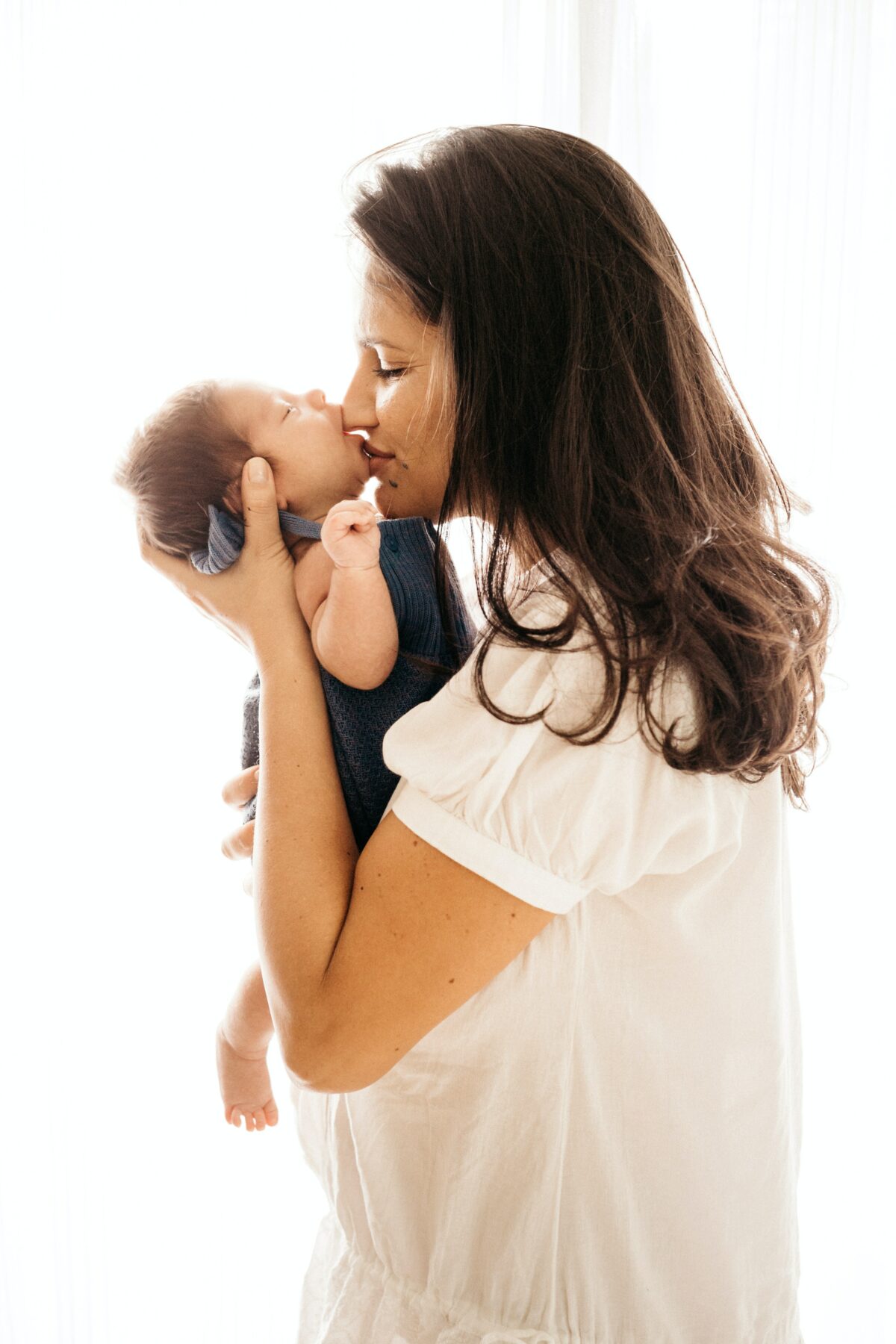After vaginal delivery, the most common pain is from breast swelling (also called engorgement), uterine contractions, and vaginal tears. Cold packs and increasing the frequency of breast feeding can help with engorgement. Pain relievers like Tylenol and Motrin can decrease inflammation to relieve pain. Heating pads can help relieve pain associated with uterine cramps, which are most common during breastfeeding in the first few postpartum days. To help reduce pain associated with vaginal tears, ice packs can be applied to the perineum (the area between the vagina and anus). Topical astringents, like witch hazel pads, or numbing creams can improve hemorrhoid symptoms.
- Padsicles can be very helpful (homemade: https://www.healthline.com/health/pregnancy/padsicles; or purchase: Frida Mom 2-in-1 Postpartum Absorbent Postpartum Perineal Ice Maxi Pads; Frida Mom Perineal Witch Hazel Cooling Pad Liners), especially when placed inside compression underwear.
- Compression underwear that extends above the belly can help with swelling and pain management in the vaginal and pelvic region.
- Using a peri-bottle with room temperature to cool (not cold or warm) water to clean following urination instead of wiping. (i.e. Frida mom upside down peri-bottle)
Following cesarean delivery, it is important to take pain medication as recommended or prescribed by your health care provider. If NSAID dosing every 3 hours does not treat your pain, low dose opiates may be used. The goal is to use low dose opiates only as needed for break through pain. Codeine containing medications pass through the breast milk and adequate precaution must be taken if breast feeding. Choosing a breastfeeding position that puts less pressure on your incision and/or using a heating pad or compression belt may also provide incision pain relief. When you poop, sneeze/cough, or vomit in the first few weeks it can be helpful to use a small pillow (i.e. a throw pill from a couch) to brace/hold against your incision. This helps to absorb force to the incision. You can also hug the small pillow against your incision when rolling to get in and out of bed as well as when standing up from a chair.
Remember, constipation is common in the postpartum period (regardless of mode of delivery) and can make pain worse so stool softeners and certain laxatives can be helpful during this time.
Tips for managing constipation:
- Stay hydrated (with water) and eat fruits and veggies (fiber) can help to prevent or minimize constipation
- Position yourself on the toilet with a foot stool under your feet to bring your knees higher than your hips (https://www.squattypotty.com/) will help to ease the path of bowel elimination
- Try to blow out through your mouth when you poop by making a “SSSSHHHHH” or “HHAAAAA” sound instead of holding your breath
- Try to make your belly big and hard like a basketball when you are blowing out.
- Daily movement and warm beverages, especially in the morning, can help to move stool through the system.
- Belly massage can also help.
For vaginal or C-Section deliveries: slow deep breathing, focusing on the lower rib cage expanding in all directions, for a few minutes can help to decrease pain and promote reduction of swelling. This also sometimes helps mid to upper back pain.
For more information: https://www.acog.org/womens-health/faqs/postpartum-pain-management
Postpartum pain Management, ACOG Committee Opinion 742, July 2018
Author: Laurel Carbone, MD and Jill M. Maples, PhD, and Jenny LaCross, PT, DPT, PhD(c), WCS, ATC, CLT-LANA
© WKU {2022} All rights reserved.
